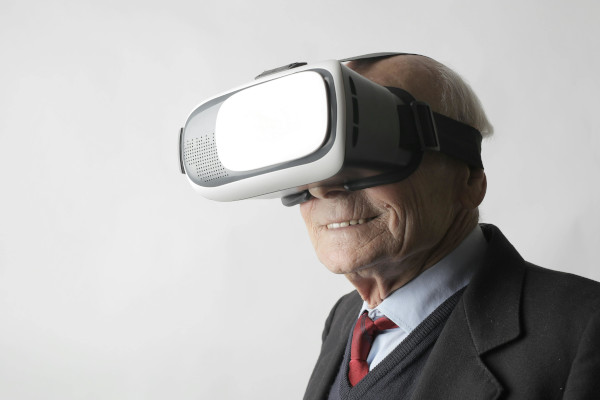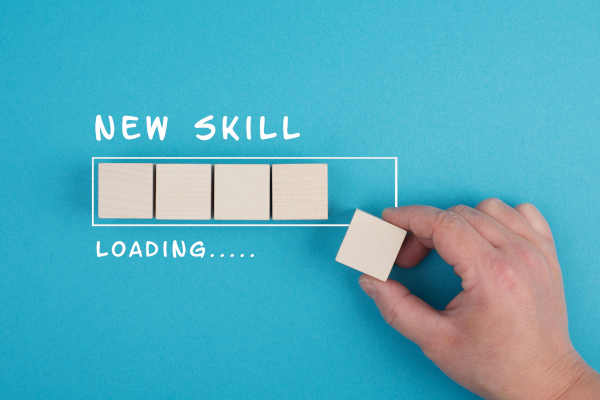Editor’s note: Each month, Supply Chain Management Review covers a supply chain education topic in The Academy, which appears exclusively on scmr.com on the third Wednesday of each month. If you are interested in future topics, you can see a full list of upcoming topics on our Editorial Calendar.
The rapid change of technology in the supply chain is leading to a significant skills gap among workers. A 2023 survey by Alcott Global found that 50% of senior executives acknowledged the existence of a talent shortage. But a significant number—64%—said their top challenge in attracting new talent is a lack of the appropriate skill set.

“While it is in the post-pandemic era that we truly comprehend the immense value of exceptional supply chain executives. The term ‘exceptional’ emphasizes the necessity for individuals who possess not only the fundamental knowledge and skills of supply chain management but also the ability to tackle unprecedented challenges and rapidly changing landscapes,” Alcott wrote in the survey report, “Be Your Success Story: Learn the skills, control your narrative in supply chain.”
The executive search firm cited the increasing complexity of global supply chains that are being driven by technology, sustainability and changing market dynamics are challenges hiring leaders must overcome.
For supply chains that are always on the go, though, closing that skills gap is challenging. Fortunately, there are opportunities to educate the next generation of workers in the skills needed. Universities and associations are stepping up, and even third-party educational firms and platforms are providing opportunities. It’s all been made easier thanks to hybrid and online learning advancements, but few learning situations can replace one of the standards—experiential learning.
What is experiential learning?
Researchers David Ernesto Salinas-Navarro, Ernesto Pacheco-Velazquez and Agatha Clarice de Saliva-Ovando recently published a paper on experiential learning in higher education in the journal Frontiers. That paper, “(Re-)shaping learning experiences in supply chain management and logistics education under disruptive uncertain situations,” explained the concept of experiential learning.
“Experiential learning is a theory of learning that emphasizes what students must do to construct their knowledge and achieve their intended learning outcomes. From a constructionist perspective, this view fosters deeper understanding, critical thinking, and hands-on activities among students, making it a valuable addition to presence and remote learning.”
According to online nonprofit university WGU, David Kolb popularized experiential learning theory (ELT) back in 1984. “The experiential learning theory works in four stages—concrete learning, reflective observation, abstract conceptualization, and active experimentation. The first two stages of the cycle involve grasping an experience, the second two focus on transforming an experience. Kolb argues that effective learning is seen as the learner goes through the cycle, and that they can enter into the cycle at any time.”
| “Experiential learning is a theory of learning that emphasizes what students must do to construct their knowledge and achieve their intended learning outcomes. From a constructionist perspective, this view fosters deeper understanding, critical thinking, and hands-on activities among students, making it a valuable addition to presence and remote learning.” |
Some students, Kolb argued, learn better with concrete learning while others require a more hands-on experience to grasp concepts.
The opposite of experiential learning is often described as passive learning, or, as researcher Paul McAfee describes it, “traditional learning.” The large number of variables—too many to teach in a classroom— that impact supply chains on a daily basis offers the perfect opportunity to get into the field and “experience” learning in real-world environments.
That’s where experiential learning is finding its most success today. It can be seen in university programs across the country, in the large number of internship opportunities that exist, and in Capstone projects that many universities now require.
Introduction of AI, VR and AR
One of the more exciting developments in the world of experiential learning is the addition of artificial intelligence, augmented and virtual reality. These technologies are allowing more flexibility in the learning environment, and allowing for more rapid delivery of up-to-date educational information.
Richard Wilding, a supply chain professor at Cranfield University in the United Kingdom, wrote a LinkedIn post last August that addressed the use of VR in teaching and its impact on supply chains.
“VR training and teaching has been around for a few years and has been very successful for training pilots, medical professionals, and even athletes. These may seem quite disparate fields to apply VR to, but they all require deep focus, engagement, and knowledge retention. While for supply chain leaders, the decisions, and learnings to be had may not be life or death (but can be in some situations!), yet the learning potential that immersive learning experiences offer could change the way we approach supply chain innovation profoundly,” he wrote.
AI and VR now offers the ability for students, and even mid-career professionals, to experience situations rather than simply reading about those situations. It allows for decisions to be made, and the consequences of those decisions to be seen immediately.
“From my own experiences providing learning programs to executives within supply chain, the theoretical and academic are all well and good but they don’t yield great results alone. Engagement is low, knowledge retention is poor, and in-classroom experiences can be costly with little return on investment,” Wilding wrote. “Better to find a solution that is engaging, interactive, and ensures everyone leaves the ‘classroom’ with tangible action points and an applicable approach to innovate their supply chain.”
It also offers organizations the ability to train large groups of employees, however geographically dispersed they may be, and keep knowledge bases current. Without the need to send employees away for weeks of training.
For students, experiential learning gives them the opportunity to solve real-world problems and build portfolios that make them more employable.
“All the lectures, all the theoretical knowledge, all the skill development—it all comes together during an experiential capstone course in a hands-on engagement for an external client that expects real results,” says the description on the Carlson School of Management’s Supply Chain Management Experiential Learning page for graduates. “This intense, demanding experience provides a new perspective on supply chain that shapes students’ thinking moving forward.”
Experiential learning is not new. In fact, it can be traced back centuries to the old days of apprenticeships, where ancient craftsman passed down their knowledge through hands-on training.
But, with technology development, experiential learning is giving supply chain organizations new tools to educate their workforces in the latest technologies, helping close that vital skills gap.
SC
MR


More Executive Education
- ASCM introduces Supplier Relationship Management certificate
- 11 core competencies critical for today’s supply chain planners
- Do certifications clinch supply chain jobs & promotions?
- Supply chain certification programs
- AI, virtual reality is bringing experiential learning into the modern age
- More Executive Education
What's Related in Executive Education

 Explore
Explore
Topics
Business Management News
- U.S.-bound containerized import shipments are up in June and first half of 2024
- Expand supply chain metrics to cover the complete customer experience
- When disaster strikes, the supply chain becomes the key to life
- Leadership development for supply chain leaders
- A smarter approach to sustainability is vital for healthy, resilient supply chains
- When the scales tilt: Making vaccine access work for all
- More Business Management
Latest Business Management Resources

Subscribe

Supply Chain Management Review delivers the best industry content.

Editors’ Picks





